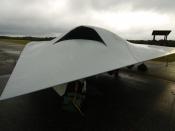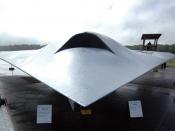Problems/Opportunities
With our Air Force being the top one in the world, they need to stay on top of the current information technology. Currently, our Air Force contains approximately 103,000 active duties and 97,000 reserve and guard personal (SOURCE). The Air Force is currently designing a system that will reduce the number of pilots and hence pilot casualties. This system is called Joint Unmanned Combat Air Systems or J-UCAS. The Air Force is also trying to improve accuracy of missions and lower costs. J-UCAS does both of these at the same time.
The System
"J-UCAS is an effort to demonstrate the technical feasibility, military utility and operational value for a networked system of high performance, weaponized unmanned air vehicles to effectively and affordably prosecute 21st century combat missions" (DARPA, 2004). These missions consist of Suppression of Enemy Air Defenses (SEAD), surveillance, and precision strike. J-UCAS will use a common operating system for all its components such as sensors, weapons and communications.
The J-UCAS will use the common operating system to perform its missions. Also, a common operating system will allow new technology to easily be applied to J-UCAS.
Initially, J-UCAS will take on the "first day of the war" role or the SEAD mission. J-UCAS will use lethal (missiles, rockets and guns) and non-lethal methods to accomplish programmed missions. J-UCAS will be able to fly with manned airplanes as well. When J-UCAS is not in combat, it will fly "dull" missions. Dull missions are such things as peacekeeping or enforcing "No-Fly" zones.
The J-UCAS program began in 2003, is anticipated to begin flight testing in 2007, and be completed in 2009. The two types of planes that J-UCAS will be installed in are the X-45A and the X-47A. The X-45A airplane was built by Boeing. The X-45A is practically all...



Good essay
Good structure and format. Lots of details. Nice job.
1 out of 1 people found this comment useful.